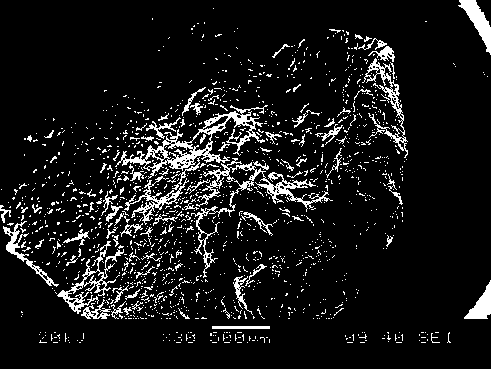Inducing method for adventitious buds of mulberry cotyledons
A bud induction and mulberry technology, applied in the field of plant genetic engineering, can solve the problems of low cytokinin and auxin concentrations, lack of histology and anatomy, low cotyledon adventitious bud induction rate, etc., and achieve stable results and induction effects. Good, short time period effect
- Summary
- Abstract
- Description
- Claims
- Application Information
AI Technical Summary
Problems solved by technology
Method used
Image
Examples
Embodiment 1
[0023] (1) Seed imbibition and cultivation
[0024] Take 200 first-generation hybrid Sangfengchi mulberry seeds, put them in a beaker and soak in water for 12 hours, then put the beaker under the tap and rinse it with running water for 2 hours; then drain the water in the beaker, add 75% alcohol to shake for 10 minutes, pour Rinse twice with clean water after drying alcohol; add 7% sodium hypochlorite solution to sterilize the surface for 15 minutes, shake continuously during this period, move it into an ultra-clean workbench, and rinse with sterilized distilled water 3 times.
[0025] (2) Separation of cotyledons
[0026] Put the surface-sterilized seeds on the dissecting mirror in the ultra-clean workbench, use a scalpel to cut the seed coat gap on the side of the hilum, use tweezers to lightly press the opposite side of the seed coat gap, and gently squeeze out the complete embryo Gently separate the two cotyledons in the embryo with dissecting forceps, and cut off the cot...
Embodiment 2
[0037] (1) Seed imbibition and cultivation
[0038] Take 200 mulberry seeds, put them in a beaker and add water to soak for 12 hours, then put the beaker under the tap and rinse it with running water for 2 hours; then drain the water in the beaker, add 0.1% mercuric chloride solution to sterilize the surface for 15 minutes, and keep Shake it, move it into the ultra-clean workbench, pour out the mercuric chloride solution, and rinse it with sterilized water for 3 times.
[0039] Put the sterilized seeds on the surface into the germination medium (1 / 2MS medium + 15g / L sucrose + 7g / L agar powder, pH value 6.0), and cultivate them for two days before separating the cotyledons.
[0040] (2) Separation of cotyledons
[0041] Place the cultivated seeds on the dissecting mirror in the ultra-clean workbench, use a scalpel to incise the seed coat gap on the side of the hilum, use two tweezers to gently tear the seed coat gap, and completely peel off the embryo. The two cotyledons in t...
Embodiment 3
[0051] (1) Seed imbibition and cultivation
[0052] Take 200 Guangdong hybrid mulberry seeds, put them into a beaker and add a little water to soak for 12 hours, then put the beaker under the tap and rinse it with running water for 2 hours. Drain the water in the beaker, add 0.1% mercuric chloride solution to sterilize the surface for 15 minutes, shake it constantly, move it into the ultra-clean workbench, pour out the mercuric chloride solution, and rinse it with sterilized water three times.
[0053] Put the sterilized seeds on the surface into the germination medium (1 / 2MS medium + 15g / L sucrose + 7g / L agar powder, pH value 6.0), during which there are seeds contaminated by bacteria, and move the uncontaminated seeds into a new germinated medium medium.
[0054] (2) Separation of cotyledons
[0055] The seeds cultivated for 3 days were placed on the internal dissecting mirror of the ultra-clean workbench, and the seed coat gap was cut on the side of the hilum with a scalp...
PUM
 Login to View More
Login to View More Abstract
Description
Claims
Application Information
 Login to View More
Login to View More - R&D
- Intellectual Property
- Life Sciences
- Materials
- Tech Scout
- Unparalleled Data Quality
- Higher Quality Content
- 60% Fewer Hallucinations
Browse by: Latest US Patents, China's latest patents, Technical Efficacy Thesaurus, Application Domain, Technology Topic, Popular Technical Reports.
© 2025 PatSnap. All rights reserved.Legal|Privacy policy|Modern Slavery Act Transparency Statement|Sitemap|About US| Contact US: help@patsnap.com



